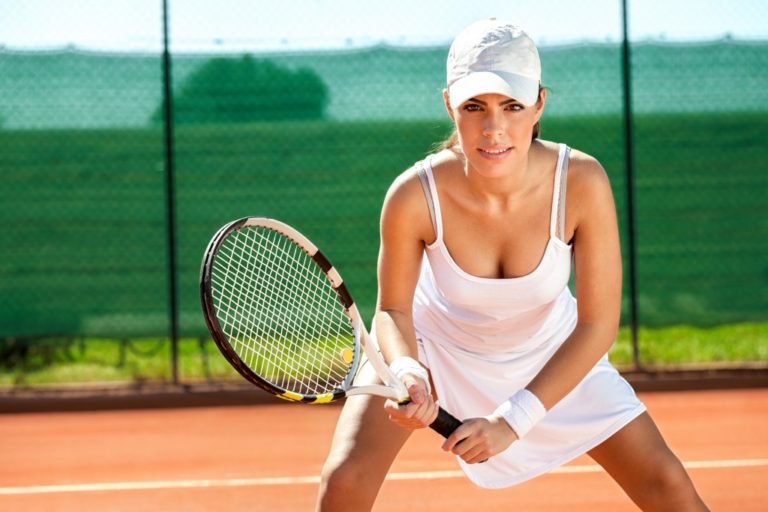There are many ways people can win in a game of tennis. But aside from the players’ skills and the weather, the surface of the tennis court affects how they play, who has the advantage, and even the eventual winner. The material of the court surface could also affect how players move on the court, as some materials are softer or smoother, and could provide a surprising advantage. Choosing the right tennis court surface that suits your needs and preferences will surely improve the quality of your game, and playing the game well could surely improve your health.
Tennis Court Surface # 1: Hard Courts
Most tennis games in the United States are played on hard courts. Hard courts are made of a concrete or asphalt base that is coated with an acrylic surface layer. Uniform rigid materials are used in making hard courts because these materials offer a greater bounce consistency compared to other outdoor surfaces. Hard courts can accommodate varying speeds but these courts are known to be faster compared to clay courts.
However, hard courts have been gradually slowed down to make Tennis games longer, more exhausting, and more challenging. Hard courts suit players with big forehands and big serves well because these courts are relatively fast. Ball bounce in hard courts varies depending on the hard court being used. There are hard courts that support a very high ball bounce and there are also hard courts that support a lower ball bounce.
Tennis Court Surface # 2: Grass Courts
Originally, Tennis was played on grass surfaces but a variety of surfaces have been created due to the varying needs of diverse players. Grass courts are very expensive because the materials needed to build and maintain these courts are highly expensive. Therefore, grass courts have become very rare. Furthermore, grass courts are subject to the influence of the seasons because grass courts can only support Tennis games when the grass condition is superb.
Grass courts are known to be the fastest type of Tennis court. Despite its benefits, the fact that its maintenance is extremely expensive cannot be ignored. The maintenance of grass courts involves checking the health of the grass used, the frequency of grass mowing, and the wear and tear caused by the most recent play. However, grass courts are considered the most compatible surface for the human body since the surface is very soft.
Tennis Court Surface # 3: Clay Courts
Clay courts are made of stone, crushed shale, or brick. Clay courts can slow down Tennis balls and produce a very high bounce which eliminates most of the advantages of a big serve. This makes it difficult for players who rely on their serves to dominate Tennis games because of the impact of clay surfaces on ball bounce. One of the best advantages of clay courts is that their construction is cheaper compared to all other types of Tennis courts. However, its maintenance costs can be very expensive.

In maintaining clay courts, it is essential to focus on monitoring the water balance within the clay. Constant adjustments need to be made in the water balance and periodical rolling also needs to be done to preserve a clay court’s flatness. Most Tennis players would agree that winning on clay courts would require a combination of good shots to make their opponents get into enough trouble to finish the winning points. Because of this, most junior players are trained on clay courts because this type of Tennis court surface offers more challenge to Tennis players.
Upkeep and Maintenance
Now that we have delved into the pros and cons of the different types of tennis courts, it is important to remember that regardless of the type of surface, tennis courts need to be maintained regularly. Maintenance can include resurfacing tennis courts, keeping the courts clean, removing foreign matter, using proper equipment, draining and landscaping for outdoor courts, and checking for other necessary repairs.
Maintaining tennis courts is one way of guaranteeing the best quality for every tennis game that will be played on different courts. All tennis courts require regular maintenance to serve their purpose efficiently even though indoor and outdoor tennis courts have varying maintenance processes and procedures. Maintaining the conditions of tennis courts will contribute to a better quality of games and better health benefits for tennis players. Therefore, investing in the maintenance of tennis courts is a must!
It’s time to play!
Focusing on strategies and tennis serves is exciting, but who knew that paying attention to tennis court surfaces is also necessary? With everything that you learned from this article, you now have the knowledge to choose the best kind of tennis court surface that would meet your needs and preferences. You just have to find the one that suits you best and you can let the athlete in you enjoy your games to the fullest!

